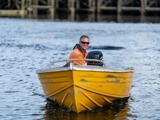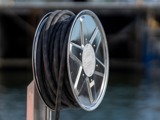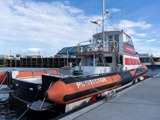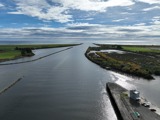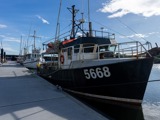Rules on the water
It is your responsibility to know and understand the rules before heading out.
Always listen and look ahead
It is your responsibility to stay alert for other boats, swimmers, dive boats, kayaks, hazards, and obstacles. Keep focused on the water ahead, especially when travelling at speed.
Travel at a safe speed
Travel at a safe speed, taking into account the boat traffic in the area, weather conditions and when visibility is limited. Operate at a speed that allows for the time and distance necessary to avoid a collision. You must not exceed a speed of 5 knots (a fast-walking speed) if you are:
- Within 200m of the shore
- Within 200m of any structure
- Within 200m of a boat displaying a diver’s flag
- Within 50m of any other boat
- Within 50m of a person swimming
- On a power boat if any person has any part of their body outside the rails or edge of the deck.
You must be over 15 years old to operate any watercraft capable of exceeding 10 knots, unless there is close supervision by an older person who is constantly within reach of the controls.
Always check the effect of your wake. You must not create a wake that causes unnecessary danger to other boats or people.
Respect the give-way rules
When two boats are approaching each other, one has the right of way.
The other boat must give way and pass astern (behind). To determine who has the right of way, consider the vessel type:
- If power meets power: Powerboats must give way to those on the starboard (right) side.
When meeting head-on, powerboats must turn starboard. - If power meets sail: Paddle or rowing craft; with the exception of specific displays, powerboats must give way unless the craft is overtaking.
- If sail meets sail: A sailing boat must give way to another sailing boat if the wind is blowing from its port (left) side or if it is windward (upwind) to the other sailing boat. Make early and obvious manoeuvre so there is no confusion. If the giveaway boat fails to give way, you must make every effort to avoid a collision. Be prepared to make substantial alterations to your direction and to slow right down or stop.
Give way when overtaking
If you approach another vessel in a 135° sector at its stern, you are considered to be overtaking and must give way.
Keep clear from the bows and paths of larger vessels
If you are in a channel or harbour, you must:
- Keep to the starboard (right) side of any channel
- Keep clear of larger vessels that are restricted by channels
- Not anchor in a channel or anywhere that could be dangerous to other craft
- Stay at least 500m clear when ahead of any large ship
- Stay 200m away from the sides and stern of tankers. Large vessels have restricted manoeuvrability and limited visibility from the bridge.

